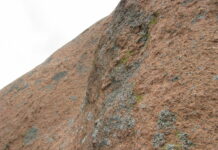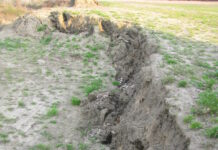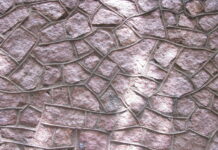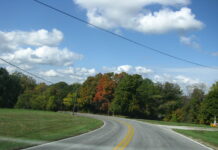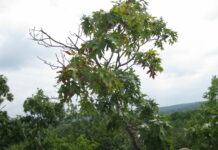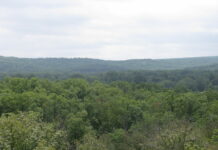Photo credit: DiasporaEngager (www.DiasporaEngager.com).
In the aftermath of HonestReporting’s exposé of Palestinian photojournalists who infiltrated Israel’s border from Gaza on October 7, several media outlets reacted by attacking HonestReporting’s integrity. As we noted at the time, this appeared to be an attempt to avoid the uncomfortable question of their freelancers’ activity by trying to reframe the conversation. They denied having advanced knowledge of the attack (which we did not claim), and then accused HonestReporting of spreading misinformation.
Notably, many of those very same media outlets either publicly severed ties with their Gazan freelancers or quietly stopped working with them — all except for The New York Times, which publicly backed Gazan photojournalist Yousef Masoud to the hilt even though we had noted in our original exposé that Masoud was working for the Associated Press on the morning of October 7.
Masoud’s name reappeared on the radar just last week as it was announced that he is to be a recipient of the prestigious George Polk Award for his photojournalism coverage for The New York Times from inside Gaza.
Today, @nytimes is celebrating Yousef Masoud’s prestigious Polk Award for his photojournalism.https://t.co/4xaqK94iPR
Reminder: Masoud didn’t only photograph the conflict “from its opening hours on Oct. 7” – he infiltrated Israel’s border from Gaza that very morning.
Questions… pic.twitter.com/OIrmg2rBbm
— HonestReporting (@HonestReporting) February 20, 2024
The announcement of the award prompted Itay Milner, the spokesperson for the Consulate General of Israel in New York, to write a letter of protest to the award committee at Long Island University.
The New York Times fired back with its own letter. Aside from taking Milner to task, the letter said:
The false accusations against Mr. Masoud can be traced back to the reckless posting by the advocacy group Honest Reporting that insinuated — without any evidence — that Mr. Masoud, a freelance photographer who has done work for The New York Times, may have had prior knowledge of the Oct. 7 attack.
The basis for Honest Reporting’s claim is a fabrication: that Mr. Masoud began shooting pictures at 5:30 a.m. when the attack began an hour later. Wrong. Mr. Masoud, we know from the photographic evidence, began shooting photographs after 6:30 a.m. — from his home’s rooftop with the fighting visible in the distance– when the noise of combat awoke him.
So what was the basis for our supposed “fabrication?” The New York Times’ own story, published the day after our exposé, explained Masoud “was woken at home in Khan Younis, in southern Gaza, by the sound of rocket fire, shortly after 5:30 a.m. on Saturday morning.” HonestReporting asked how he could have been woken by rocket fire at 5:30 a.m. when rockets did not start until 6:30 a.m.
We repeated this question after the announcement of Masoud’s award.
It has now come to light that three days after its story, The New York Times issued a correction, changing the time Masoud was awoken to 6:30 a.m. In that same article, they explain that his first photograph was taken more than 90 minutes after the attack began.
Yet the AP image database shows metadata confirming that the photo he took of Gazans standing atop a tank east of the security fence was created at 6:41 a.m. (13 minutes after the attack began).
So, if Masoud’s first picture was, as The New York Times claimed, taken “from his home’s rooftop with the fighting visible in the distance — when the noise of combat awoke him,” how did he manage to get from his rooftop to the other side of the border in little more than ten minutes to snap the photo of Gazans on top of an Israeli tank?
Curiously, the same photo also appears on the AP’s image database with a later creation date of 10:11 a.m. Different submission dates are understandable as a photojournalist might send images to an employer at random times. But how to account for this discrepancy in the creation date?
We asked a professional photojournalist with many decades of experience in the media. He pointed out the ease at which photo metadata can, at worst, be manipulated or might be incorrect due to erroneous settings on the camera. We hope that the AP can provide a logical explanation.
Our original article led to subsequent investigations that credibly linked some photojournalists to terrorist organizations. Given all of these discrepancies, it is entirely reasonable for HonestReporting to be raising these questions and holding Masoud, the AP, and The New York Times publicly accountable.
On November 12, we wrote that by publishing our exposé, our intentions were to: “shine a light on the conversation surrounding the media’s use of Palestinian stringers who, at best, operate in an environment controlled by Hamas, and at worst, are active accomplices. There are clear complications surrounding freedom of the press in Gaza. While international news agencies want to work with local Gaza photojournalists or other Palestinian stringers, they owe their readers transparency.”
This conversation continues to prove its legitimacy as evidence emerges of Gazan journalists having ties to terrorist organizations.
Included in The New York Times’ letter to Itay Milner was a claim that has been repeated in multiple media outlets since our exposé:
Gil Hoffman, executive director of Honest Reporting, has since admitted the group had no evidence for the insinuations against the freelance journalists although for reasons that only Mr. Hoffman can explain, Honest Reporting has once again been trafficking in falsehoods about Mr. Masoud.
As we said at the time, Hoffman’s subsequent conversations with Reuters and AP were misconstrued and taken out of context in an attempt to discredit our original exposé. To avoid the uncomfortable question of their freelancers’ activity on October 7, the media tried to reframe the conversation. They denied having advanced knowledge of the attack (which we did not claim), and then accused HonestReporting of spreading misinformation. We wholeheartedly reject this baseless assertion. HonestReporting noticed the details and asked the questions that fact-checkers and editors at these news organizations should have asked themselves.
Gil Hoffman tweeted a response to the media claims against him at the time, which was also ignored by those media outlets.
Enough is enough. It’s time the media, and particularly The New York Times, started giving proper answers instead of denigrating the people who are asking the relevant questions.
The author is the Editorial Director of HonestReporting, a Jerusalem-based media watchdog with a focus on antisemitism and anti-Israel bias — where a version of this article first appeared.
Source of original article: Simon Plosker / Opinion – Algemeiner.com (www.algemeiner.com).
The content of this article does not necessarily reflect the views or opinion of Global Diaspora News (www.GlobalDiasporaNews.com).
To submit your press release: (https://www.GlobalDiasporaNews.com/pr).
To advertise on Global Diaspora News: (www.GlobalDiasporaNews.com/ads).
Sign up to Global Diaspora News newsletter (https://www.GlobalDiasporaNews.com/newsletter/) to start receiving updates and opportunities directly in your email inbox for free.



